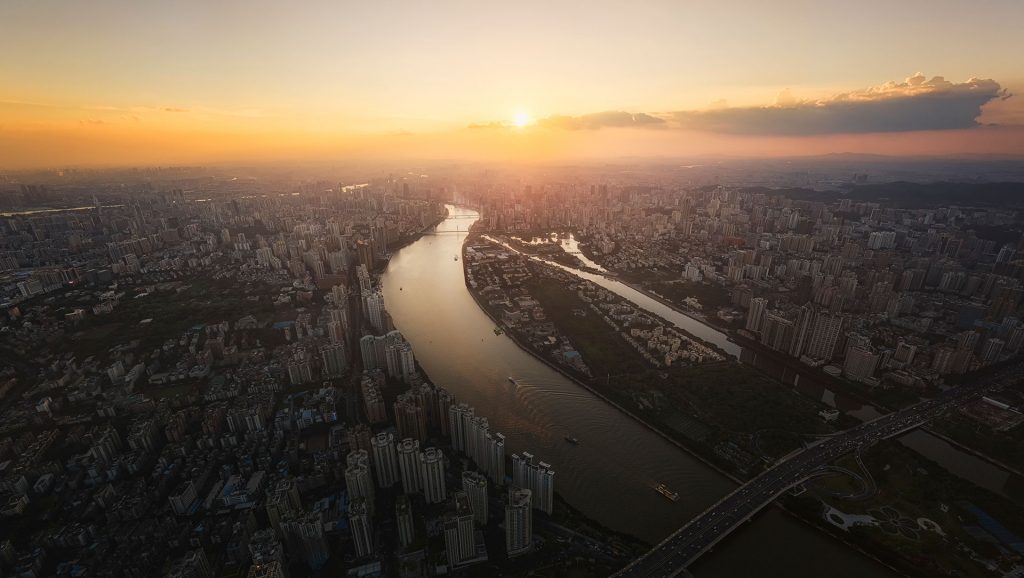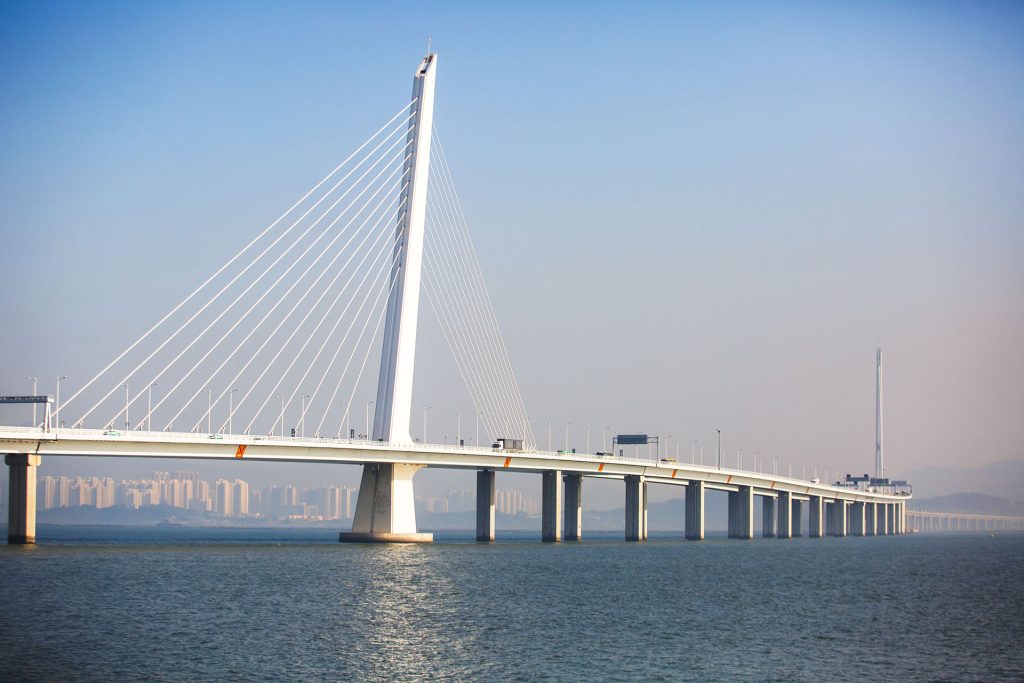
China is ready to set another record: the Shenzhen-Zhongshan Bridge. It will be the longest and widest motorway connection in the world when it is inaugurated in 2024.
The $6.69-billion project is one of the most important infrastructure works being built in China. It will significantly improve the country’s transport links in the Greater Bay Area, the wealthy region that includes Hong Kong and Macau.
The underwater portion of the bridge will reach a length of 6.8 kilometres (4.2 miles) and have a service life of 100 years. It will allow for a maximum speed of up to 100 kilometres (62 miles) per hour.
The tunnel is obviously part of a far grander work: a series of bridges linking the Pearl River Delta cities across a 24-kilometre(14-mile) route.
According to the Chinese press, once open, the bridge will cut travel times from two hours to 30 minutes between Zhongshan and Shenzhen.
A steel giant
The numbers are the best way to emphasise the massive size of this project. According to the China Daily newspaper, 320,000 tonnes of steel will be needed to build the structure of this 46-metre-wide (150-feet), two-way eight-lane motorway link. In addition to the tunnel, the connection consists of 19 bridges, the longest of which is 10 kilometres (6.2 miles) with a span of 1,666 metres (5,465 feet), and a series of connections that bring its final length to about 50 kilometres (31 miles).
Overall, this is a complex infrastructure where tunnels and bridges rest on the seabed, but also on specially-built artificial islands.

A long-term project
The idea of building a connection on the Pearl River that would bring some of China’s most productive and wealthy urban areas closer dates back to 2002, when the Guangdong government began to investigate the possibility of building a first bridge between Shenzhen and Zhuhai. The feasibility study of the new bridge between Shenzhen and Zhongshan dates back to 2008, while in 2015 the National Development and Reform Commission officially approved the plan. Construction of the artificial islands began between 2016 and 2018, and the worksite is in full swing. Local authorities expect the bridge to be inaugurated in 2024, according to schedule – another important step in the development of one of the most populous and richest urban conglomerates of the world.
A development accelerator for the region
The new bridge will have a significant impact on the development of the region.
According to China Daily, the connection will fuel trade between the mainland and the two special regions of Hong Kong and Macau, thus strengthening the region’s economic power. The work will build on the impact of the Hong Kong-Zhuhai-Macau Bridge, which is open and was expected in 2016 to be able to carry 29,100 vehicles and 126,000 people every day by 2030.
The new connection will not only contribute to decongesting the Hong Kong-Zhuhai-Macau Bridge, but will connect the far shores of the Pearl River estuary to each other.
The Chinese government has big plans for the Greater Bay Area, where 11 major cities are developing transport networks to increase trade. This is a strategic region of 56,000 square kilometres, more than two times larger than the New York Metropolitan or the San Francisco Bay areas, where 70 million people live and which produces 12% of China’s gross domestic product. Therefore, investments in mobility infrastructure are considered fundamental. Fast trains, highways, and underground rail lines are seen as key by the Chinese government to achieve the goal laid out in the Outline Development Plan presented at the 19th Congress of the Communist Party of China: to create an infrastructure network that allows people to reach any urban centre in the region in less than an hour.

